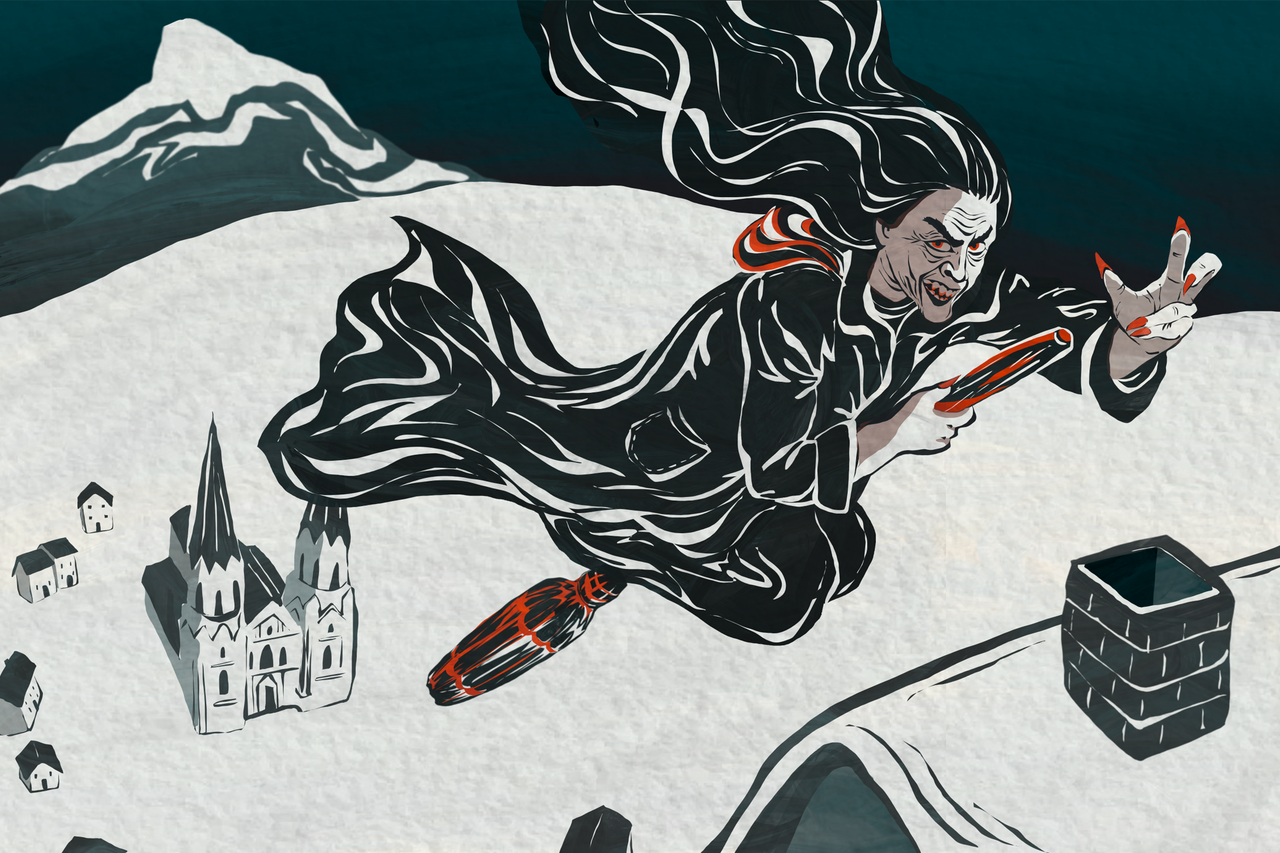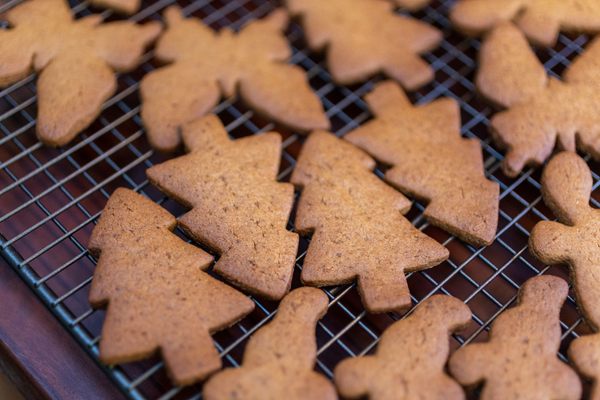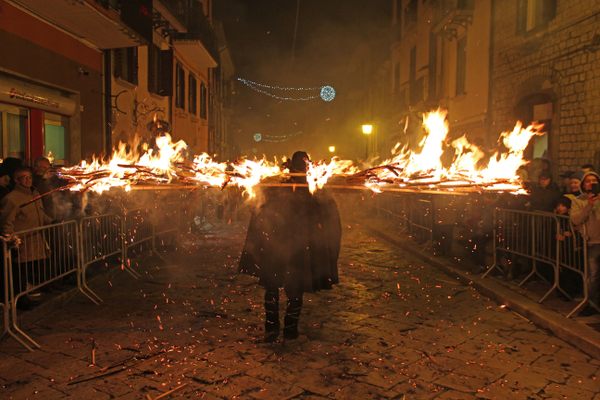Fearsome Frau Perchta Is an Ancient Alpine Winter Goddess
Today, she’s commonly called the Christmas Witch or even “the female Krampus”—but she is so much more.
On the Rauhnächte, the darkest nights of the year, she leads an entourage of women on a wild hunt, accompanied by screeching demons. They fly on distaffs, wooden sticks used in traditional wool-spinning that look very much like brooms. In some tales, she appears as a crone with one webbed foot, like that of a goose or swan, trailed by spirits of unbaptized children, the smallest dragging a pitcher filled with mothers’ tears. In other tellings, she is a beautiful woman in white robes who emerges during Twelfth Night.
Throughout much of Central Europe, she is known by many names, including Frau Faste, Gode, Herke, Stampe, Faste, Frau Holle, Berchta, and, perhaps most famously, particularly in the Alpine regions, Frau Perchta.
Today, Frau Perchta is often depicted as “the Christmas witch,” or, even less accurately, as the “female Krampus.” Both descriptions fail to acknowledge her full expression: She is a goddess, and an archetype of the wise woman found almost universally in pagan traditions.
In fact, many scholars believe that Frau Perchta is the original great goddess of the Alpine region, “a powerful female divinity … worshiped among the Germanic nations of the Continent,” as Lotte Motz wrote in The Great Goddess of the North.
In 1835’s Deutsche Mythologie, Jacob Grimm (half of the famous brotherly duo) wrote that, as Frau Holda, she “appears as a superior being, who manifests a kind and helpful disposition towards men, and is never cross except when she notices disorder in household affairs.”
Grimm’s description understates her displeasure over a messy home or idle hands. In most versions from the Christian era, the goddess figure is obsessed with household chores, especially spinning. If your house isn’t scrubbed clean and you haven’t finished spinning all your flax by Twelfth Night (also known as Perchtentag), she may slit your belly open, rip out your innards, and stuff you with straw, rocks, and bits of glass. She also disembowels lazy children. Even if your house is tidy, you best not forget to leave her a tribute, which varies by region: dumplings and herring in Central Germany’s Thuringia, a porridge of oats and herring called Perchtenmilch in parts of Austria, or eggs and more dumplings, left on the roof, in Tyrol.
How did a powerful goddess diminish into a violent hag obsessed with domestic chores, particularly during the 12 days between Christmas and Epiphany? In a word, perhaps not surprisingly: the Church.
As patriarchal Christianity spread across Europe, it had to contend with pagan traditions that included goddess worship in many forms. The Church had an advantage over largely oral pre-Christian belief systems: an army of clergy, monks, and other scribes who could extensively document alleged bad behavior by these ancient deities and their followers. In fact, much of what we know of Frau Perchta in all her forms comes from ecclesiastical records.
Folklore preserves a few more details that may well have originated in the pre-Christian past: This goddess cared for the souls of those who died as children, and taught mortals how to make linen from flax. The tradition of leaving food for Frau Perchta began not as a way to avoid violent punishment but rather to seek her blessing—and continued well into the Christian era, vexing the Church. In the 1200s, Rudolf, a Cistercian monk, wrote, “In the night of Christ’s Nativity they set the table for the Queen of Heaven, whom the people call Frau Holda, so that she might help them.”

The Church condemned this practice, and clergy waged an ugly propaganda war against the goddess for centuries. Motz noted that no less than Martin Luther attacked the goddess figure in more than a dozen sermons, including, “Here Fraw Hulde steps forward with her big snout, defies her god and calls Him a liar.”
In demonizing Perchta, the Church ended up emphasizing the duality of this ancient winter goddess—and perhaps perpetuating her appeal. Today in some parts of Austria and Bavaria, there are processions of Schönperchten (“beautiful Perchtas”) and Schiachperchten (“ugly Perchtas”) during the twelve nights between Christmas and Epiphany. Her minions dash noisily through the streets, their typically horned and hairy, bell-laden costumes remarkably similar to those of modern Krampusse—which may have been inspired, in part, by the older Perchten tradition. While the figure of Krampus emerged relatively recently as a demonic, punitive counterpart to the benevolent St. Nick, the Perchten have long been associated with the winter deity who has survived despite a concerted effort to erase all memory of her and her power.
So this Jan. 5, or Perchtentag Eve, tidy your house and leave out some snacks not to please a terrifying witch, but to honor the great goddess of winter.










Follow us on Twitter to get the latest on the world's hidden wonders.
Like us on Facebook to get the latest on the world's hidden wonders.
Follow us on Twitter Like us on Facebook